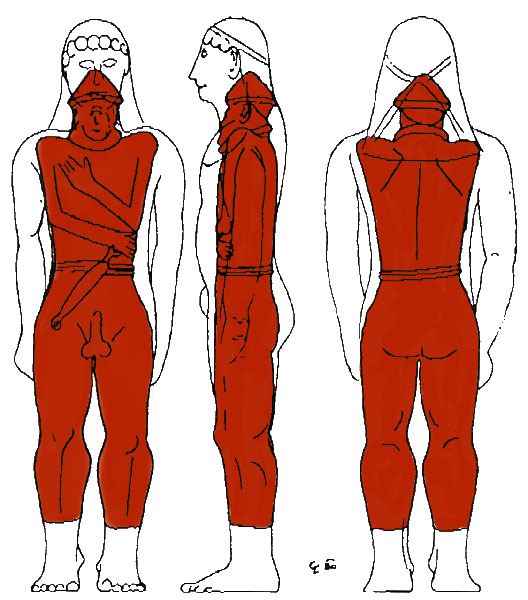
Beeser presents a daring attempt to reconstruct the Greek "masterpiece" which, in his scenario, was deliberately damaged and then recut by a local artisan. The outline of his kouros is juxtaposed with front and back views of the Hirschlanden statue, here composited with a frontal color photograph for clarity. Beeser does not provide a side view, which would have illustrated his contention that the forward-jutting chin of the Hirschlanden warrior was cut from the beard of the Greek kouros. Kouroi were beardless youths. Beeser also does not explain how the parallel stance of the Hirschlanden warrior could have been cut from a kouros, which by definition has a distinctly advanced left leg.
After Beeser 1983, 44 Fig. 18

Eibner's reconstruction tackles the difficult side view. Note that the vaunted "Greek-looking" thighs and buttocks are in fact sharply reduced and flattened in comparison with the voluptuous curves of the kouros. Eibner has created a kouros with a protruding belly and with legs set parallel, both unknown among preserved Greek kouroi. Like Beeser's , Eibner's kouros has shortened thighs and impossibly thick calves and ankles. Eibner's original drawing below is colored for clarity.
After Eibner 1982, Fig. 
I have composited views of the Hirschlanden warrior with the Volomandra, Ptoon and Aristodikos kouroi to illustrate my contention that the Hirschlanden figure is an original work and could not have been cut down from a Greek kouros.